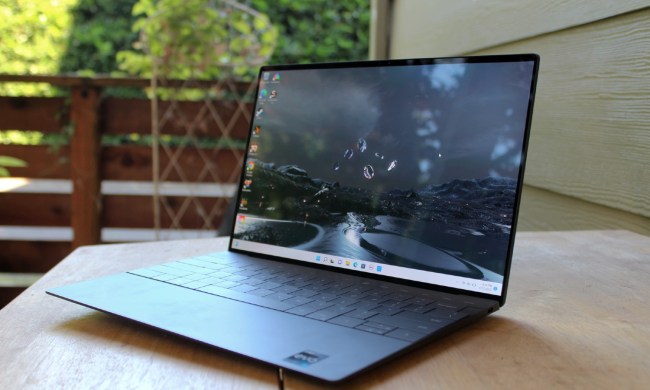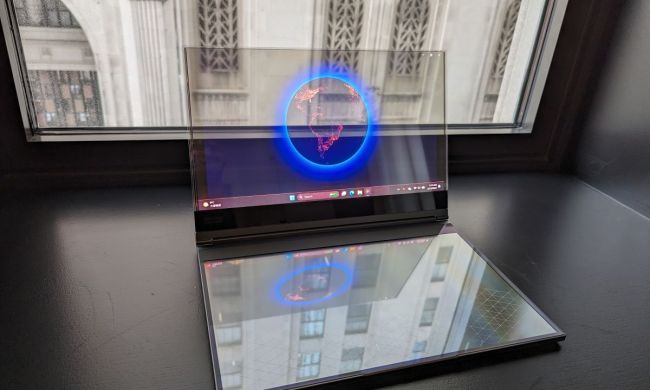Magnets. How do they work? We’re not sure, but they make the Miix awesome.
In theory, a dockable tablet should be simple. Just slide the tablet into the keyboard and, like magic, you’ve got a laptop. In reality, most dockables aren’t so simple, as they usually employ a mechanical latch to keep the tablet in place. Locking the tablet in place won’t make you miss your flight, but it’s a small inconvenience that, after weeks or months of use, becomes annoying.
Lenovo has addressed this with its new Miix, a dockable Windows tablet that comes in 10-inch and 11-inch flavors. Both dock with the keyboard via a powerful magnetic strip that keeps the tablet in place sans-latch. Converting from a tablet to laptop, and back again, couldn’t be easier. This is the kind of dead-simple operation many iPad cases and keyboards already use, but few PC manufacturers have picked up on it. We’re glad Lenovo has joined that short list.
The hinge isn’t perfect, however. We noticed it sometimes sucked the tablet into a slightly off-center position. While this doesn’t make the Miix harder to use, it does look a bit odd.
Though the larger 11-inch Miix of course has a larger keyboard dock, the keys themselves are the same size as the 10-inch model. Only the palmrest grows. That’s a missed opportunity, but fortunately the 10-inch keyboard uses every millimeter of space and is executed with typical Lenovo quality. We don’t recommend writing the next great vampire romance novel on this convertible, but the typing experience is enjoyable. The touchpad felt adequate, too, though a bit lacking in vertical space.
Neither version of the Miix is a heavyweight; the 10-inch is 1.3 pounds, while the 11-inch is 1.8 pounds. Attaching the dock adds about a pound to each. There are lighter tablets available, but these specs are in line with competitors running Windows.
Performance depends on which version you want. Go for the 10-inch and you’ll be using Atom, but the 11-inch is powered by a Core i5. The smaller model also has just 2GB of RAM, while the larger one can be equipped with up to 8GB. Both come with a variety of SSD storage options and will be available with 3G/LTE connectivity.

Benchmarks will no doubt prove that the larger model is quicker, but we saw little difference during our brief time with each. Both loaded programs quickly and showed no hint of hesitation.
As for the touchscreen; it’s good. Both Miix models have a typical 1920 x 1200 IPS panel. The fact we’re using “typical” in conjunction with “1920 x 1200” shows how far PCs have come in the last two years, and the Miix certainly doesn’t look bad. It’s just not as good as an iPad Air or some Android alternatives.
Lenovo claims both systems will offer about eight hours of battery life. If that proves correct, it’ll be enough to get by but not enough to impress. An added shot of juice could have been crammed in the keyboard, but that option was declined, presumably to keep the price down.
And keep it down they did. The 10-inch Miix will ship for $499, while the 11-inch will be priced at $699. Both quotes include the keyboard dock. In other words, you’ll be able to buy a 10-inch Windows 8.1 tablet with a keyboard for the price of an iPad Air this spring. The question is – will you?
Highs
- Light and thin
- USB and HDMI connectivity
- Strong processor choices
Lows
- No extended battery in keyboard dock
- Not particularly light






